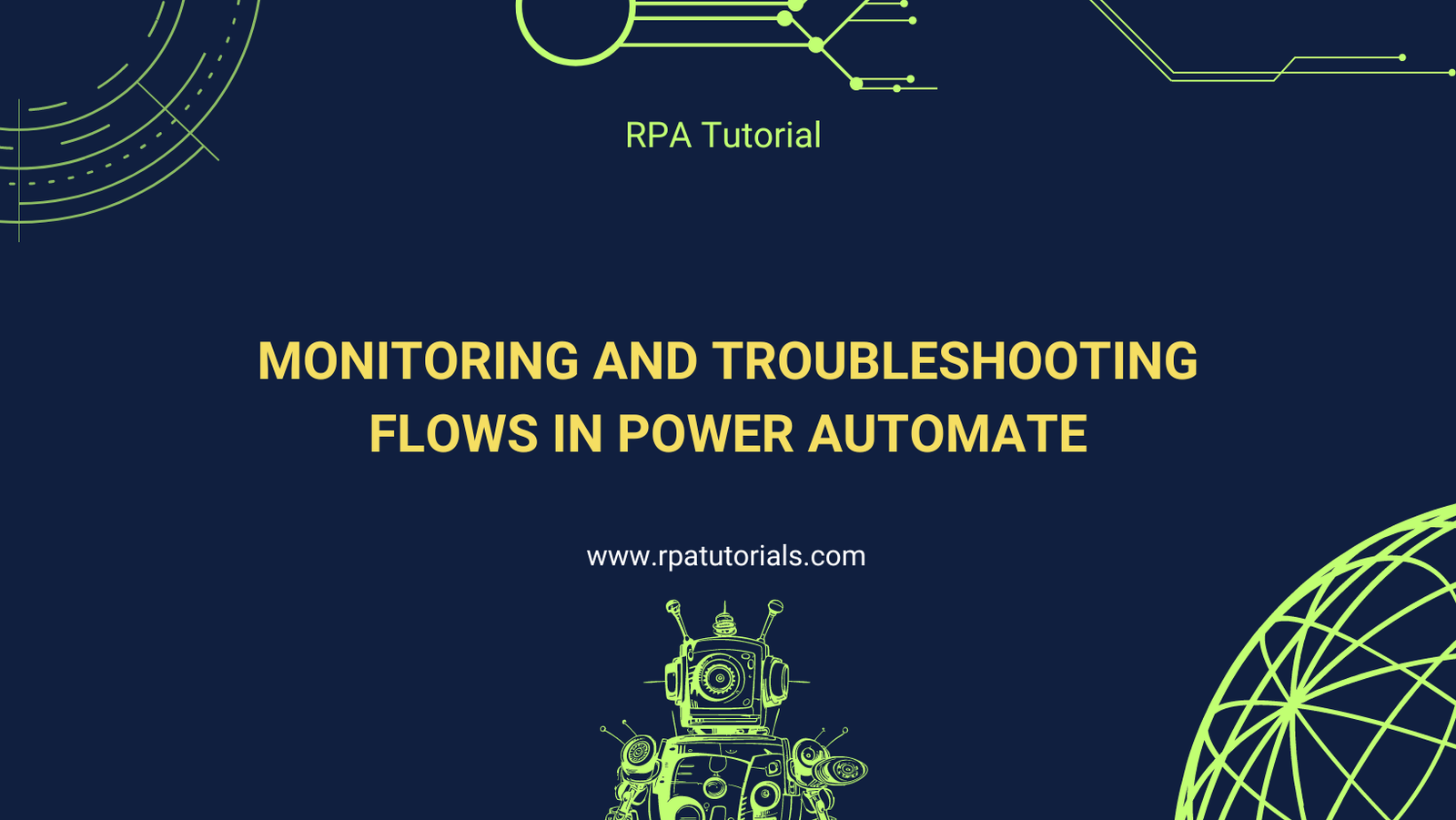Introduction
Power Automate is a powerful tool for creating automated workflows, but ensuring these flows run smoothly requires regular monitoring and effective troubleshooting. In this blog post, we’ll cover the essential practices for monitoring your flows and troubleshooting common issues to keep your automation running efficiently.
Table of Contents
- Importance of Monitoring Flows
- Using Power Automate’s Built-In Monitoring Tools
- Common Issues and Troubleshooting Tips
- Best Practices for Flow Maintenance
- Conclusion
1. Importance of Monitoring Flows
Monitoring your flows in Power Automate is crucial for maintaining the reliability and efficiency of your automated processes. Regular monitoring helps you:
- Detect Failures Early: Quickly identify and address issues before they impact your business operations.
- Ensure Compliance: Maintain adherence to regulatory requirements and internal policies by ensuring flows are running as expected.
- Optimize Performance: Identify bottlenecks and optimize your flows for better performance.
- Maintain Data Integrity: Ensure that data is being processed correctly and consistently.
2. Using Power Automate’s Built-In Monitoring Tools
Power Automate provides several built-in tools to help you monitor the performance and health of your flows.
1. Flow Run History:
- Accessing Run History: Navigate to the “My Flows” section, select the flow you want to monitor, and view its run history. This provides a detailed log of each flow execution, including success and failure status.
- Analyzing Run Details: Click on individual runs to see detailed information about each step. This includes inputs, outputs, and any error messages that occurred.
2. Analytics:
- Flow Analytics: Use the analytics feature to gain insights into flow performance. This includes metrics such as the number of successful runs, average duration, and failure rate.
- Dashboards: Create custom dashboards to visualize flow performance and trends over time.
3. Notifications:
- Setting Up Alerts: Configure notifications to receive alerts when a flow fails. This allows you to take immediate action to resolve issues.
- Custom Alerts: Customize alerts based on specific conditions, such as failure rates exceeding a certain threshold.
3. Common Issues and Troubleshooting Tips
When monitoring your flows, you may encounter common issues that require troubleshooting. Here are some tips for resolving these issues:
1. Authentication Errors:
- Issue: Flows fail due to authentication errors, often caused by expired or revoked credentials.
- Solution: Regularly update and refresh credentials. Use service accounts where possible to minimize disruptions.
2. Connectivity Issues:
- Issue: Flows fail due to connectivity issues with connected services.
- Solution: Check the status of the connected services. Implement retry policies to handle intermittent connectivity issues.
3. Data Validation Errors:
- Issue: Flows fail due to incorrect or unexpected data.
- Solution: Implement data validation steps to check for and handle invalid data. Use condition checks and error handling to manage exceptions.
4. Performance Bottlenecks:
- Issue: Flows take too long to execute, affecting performance.
- Solution: Optimize your flows by reducing the number of actions, using parallel branches, and minimizing API calls. Monitor performance metrics to identify and address bottlenecks.
5. Action Failures:
- Issue: Specific actions within the flow fail.
- Solution: Review the action’s configuration and ensure it’s set up correctly. Use detailed error messages to diagnose and fix the problem.
4. Best Practices for Flow Maintenance
To keep your flows running smoothly, follow these best practices for maintenance:
- Regular Audits: Conduct regular audits of your flows to ensure they are functioning as expected and to identify any potential issues.
- Documentation: Maintain detailed documentation of your flows, including their purpose, configuration, and any known issues.
- Version Control: Use version control to keep track of changes to your flows. This allows you to revert to previous versions if issues arise.
- Testing: Thoroughly test flows in a controlled environment before deploying them to production. Regularly test flows to ensure they continue to work as expected.
- Continuous Improvement: Continuously monitor and refine your flows to improve performance and reliability.
5. Conclusion
